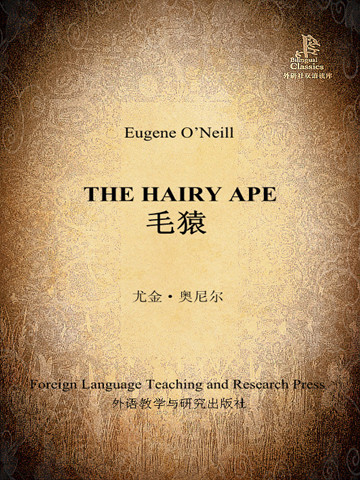《毛猿》是尤金•奥尼尔创作的一部兼有现实主义、表现主义和象征主义的戏剧。《毛猿》,1921年是一出包含有典型的表现主义手法的戏,它不分幕,全剧由八场组成,情节简单,多采用大段独白。它以邮船司炉工扬基为中心人物,叙述他如何在非人条件下为老板干活,却被老爷太太们视为人猿,最后只有到动物园去向黑猩猩诉说痛苦,被黑猩猩拥抱而死。
《毛猿》是尤金•奥尼尔创作的一部兼有现实主义、表现主义和象征主义的戏剧。主人公扬克是一艘远洋轮船上的司炉,以身强力壮得到同伴的敬畏而自豪,但在遭到旅客中一个有钱女人的侮辱后,便失去了生活的方向,到处寻找自我的归属感,他与动物园的一只大猩猩结交成了朋友,结果却死在它的大力拥抱之中。剧本表明在冷酷无情的资本主义社会,像扬克这样的工人只能忍受非人的待遇,要想改变这种状况,只会遭到更加悲惨的结局。
The Hairy Ape (1922) is an expressionist play by Eugene O'Neill about a brutish, unthinking laborer known as Yank as he searches for a sense of belonging in a world controlled by the rich. At first Yank feels secure as he stokes the engines of an oceanliner, and is highly confident in his physical power over the ship's engines.However, when the weak but rich daughter of an industrialist in the steel business refers to him as a "filthy beast," Yank undergoes a crisis of identity. He leaves the ship and wanders into Manhattan, only to find he does not belong anywhere—neither with the socialites on Fifth Avenue, nor with the labor organizers on the waterfront. Finally he is reduced to seeking a kindred being with the gorilla in the zoo and dies in the animal's embrace.
- 第一场
- 第二场
- 第三场
- 第四场
- 第五场
- 第六场
- 第七场
- 第八场
- 版权页
- SCENE I
- SCENE II
- SCENE III
- SCENE IV
- SCENE V
- SCENE VI
- SCENE VII
- SCENE VIII
- Copyright Page
- 书评 写书评
- 笔记
-
书评加载中...























 京公网安备 11010802032529号
京公网安备 11010802032529号
笔记加载中...